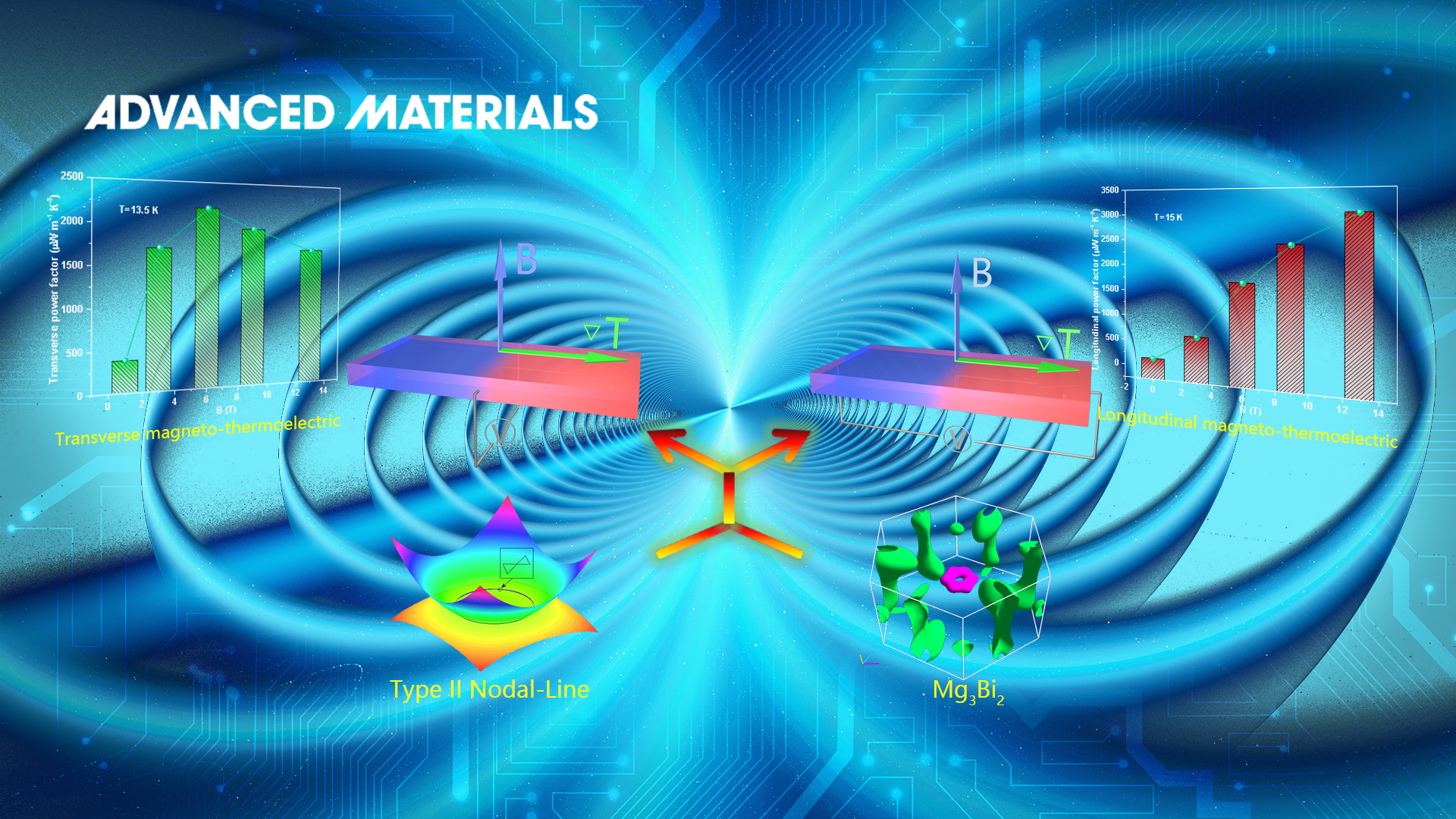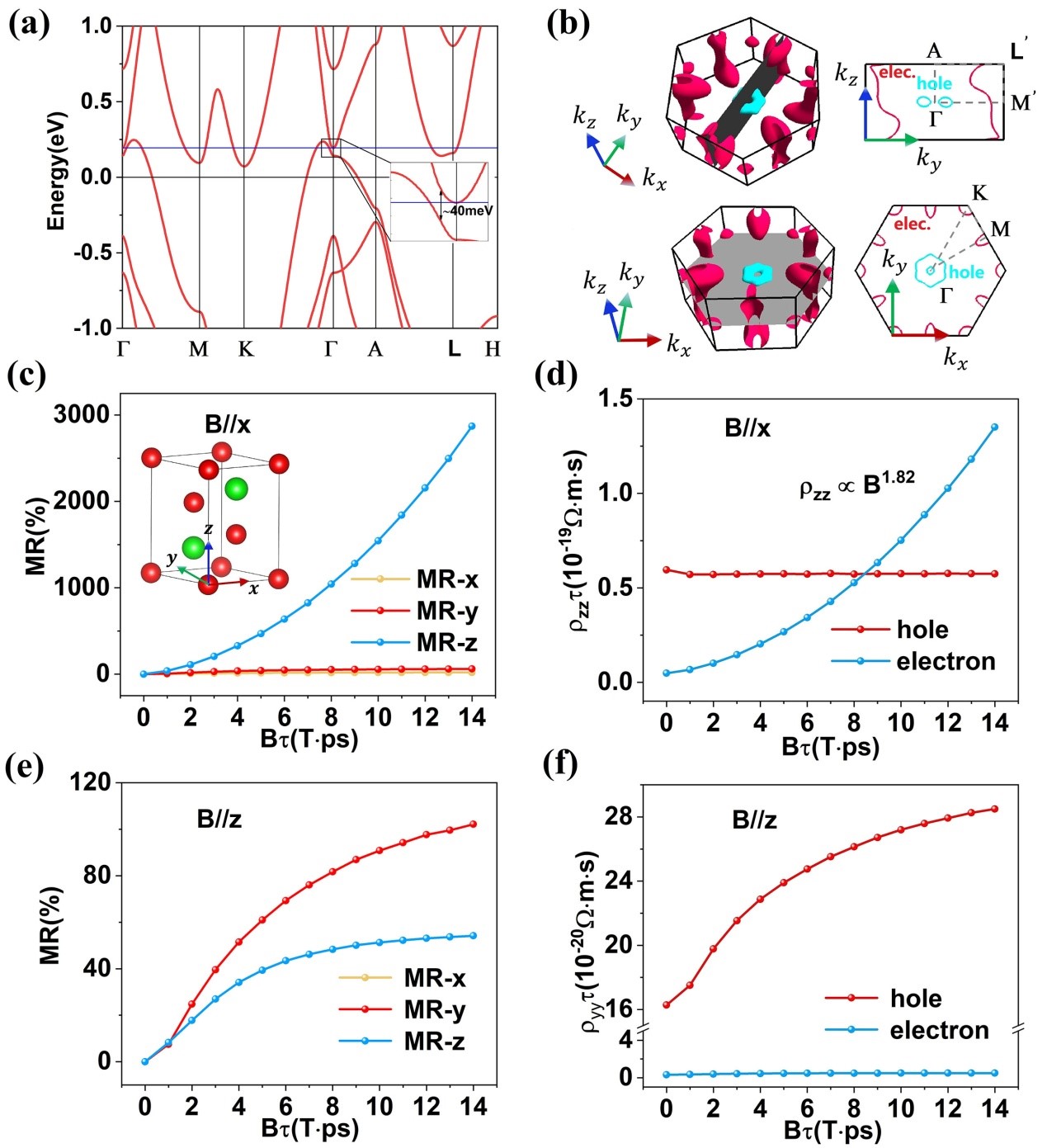Topological semimetals have a linear-dispersed low energy excitation, exhibiting significant responses to a magnetic field. Some of them also have an excellent magneto-thermoelectric performance.
Currently, most of the studies on the magneto-thermoelectric effect are based on single-crystal Dirac semimetals and Weyl semimetals. It is of great significance to find new semimetals with high magneto-thermoelectric performance, which has a potential application the solid-state refrigeration.
Polycrystalline materials have more advantages in large-scale synthesis and device assembling than their single-crystal counterpart. However, there are still challenges in modulating the Fermi level of polycrystalline materials to topological neutrality state (that is, the carrier concentration ratio p/n ~ 1) and obtaining high-performance polycrystalline magneto-thermoelectric materials.

A team of researchers from the Southern University of Science and Technology (SUSTech), including Professors Weishu Liu and Wenqing Zhang from the Department of Materials Science and Engineering (MSE), and Associate Professor Qihang Liu from the Department of Physics, have made significant progress in magneto-thermoelectricity. Their research paper, entitled “Large Transverse and Longitudinal Magneto-Thermoelectric Effect in Polycrystalline Nodal-Line Semimetal Mg3Bi2,” was published in Advanced Materials.
Recently, Mg3Bi2 has been reported to be the first type II nodal-line topological semimetal. However, the researchers found that it had a weak response to magnetic fields. The magnetoresistance of Mg3Bi2 single-crystal thin film and single-crystal bulk are only 0.6% (2 Tesla) and 3% (9 Tesla) at 2 K, respectively, which is not suitable for magneto-thermoelectric research.
Prof. Weishu Liu’s team achieved high magneto-thermoelectric performance in polycrystalline type II nodal-line topological semimetal Mg3Bi2 samples through careful composition control. It elucidated the relationship between the magneto-thermoelectric effect and Mg defects. The as-fabricated Mg3Bi2 gradually approached the topological neutrality state, with carrier concentration ratio p/n was reduced from ~220 to ~2 by carefully neutralizing the Mg vacancy. Finally, the joint research team achieved a high magnetoresistance of 940% (2 K, 14 Tesla) in the Mg3Bi2 polycrystalline material (as shown in Fig. 1).

Figure 1. Magnetoresistance properties of polycrystalline Mg3Bi2
Prof. Qihang Liu’s team and Prof. Wenqing Zhang conducted the theoretical calculations to understand the magnetic field response behavior of Mg3Bi2, discovering a significant anisotropic magnetoresistance in this material. On the one hand, a large and unsaturated z-axis magnetoresistance of nearly 3000% was obtained at Bτ=14(Tesla∙ps) (B//x) and 20 K (Fig. 2c); On the other hand, when B//z, MR saturated in all three directions, it approaches no more than 105% (Fig. 2e).
The origin of the anisotropic magnetoresistance in Mg3Bi2 is convinced to be connected with a special Fermi surface shape in a magnetic field. When the magnetic field is in the x direction, electron orbits are open and hole orbits are closed, while the magnetic field is in the z direction the orbits of both electron and hole are closed (Fig. 2b). Further analysis of the separated contributions of electrons and holes to resistivity (Fig. 2d, f) confirmed the above-mentioned topological features of the anisotropic Fermi surface shape of Mg3Bi2, providing a notable field for the future search for new magneto-thermoelectric materials.

Figure 2. Electronic structure and transport properties of Mg3Bi2 from first-principles calculations
The as-fabricated Mg3Bi2 has both excellent transverse and longitudinal magneto-thermoelectric properties. The transverse magneto-thermopower reaches a maximum value of 127 μVK−1 at 13.5 K. The longitudinal magneto-thermopower reaches up to 176 μVK−1 at 15 K. The transverse power factor reaches 2182 μWm−1K−2 (13.5 K, 6 Tesla). The longitudinal power factor reaches 3043 μWm−1K−2 (15 K, 13 Tesla), which is superior to most of the currently reported polycrystalline magneto-thermoelectric materials. Therefore, Mg3Bi2 polycrystalline materials tending to topological neutrality state are expected to be used in the fields of solid-state low-temperature refrigeration.
This work revealed a significant magneto-thermoelectric effect in type II nodal-line topological semimetals for the first time, which greatly broadens the research scope of topological magneto-thermoelectric materials. Meanwhile, it also offers a new avenue toward highly efficient MTE materials through defect engineering to tune the polycrystalline topological semimetals.

Figure 3. Transverse and longitudinal magneto-thermoelectric properties of as-fabricated polycrystalline Mg3Bi2
Tao Feng, a postdoctoral student of the Department of MSE, and Panshuo Wang, a postdoctoral student of the Department of Physics at SUSTech, are the co-first authors of the paper. Prof. Weishu Liu, Prof. Qihang Liu, and Prof. Wenqing Zhang are the corresponding authors.
The project was supported by the National Key R&D Program for Transformative Technology, the Guangdong Provincial Innovation and Entrepreneurship Team Project, and the Tencent Foundation.
Paper link: https://onlinelibrary.wiley.com/doi/10.1002/adma.202200931
To read all stories about SUSTech science, subscribe to the monthly SUSTech Newsletter.
Proofread ByAdrian Cremin, Yingying XIA
Photo By